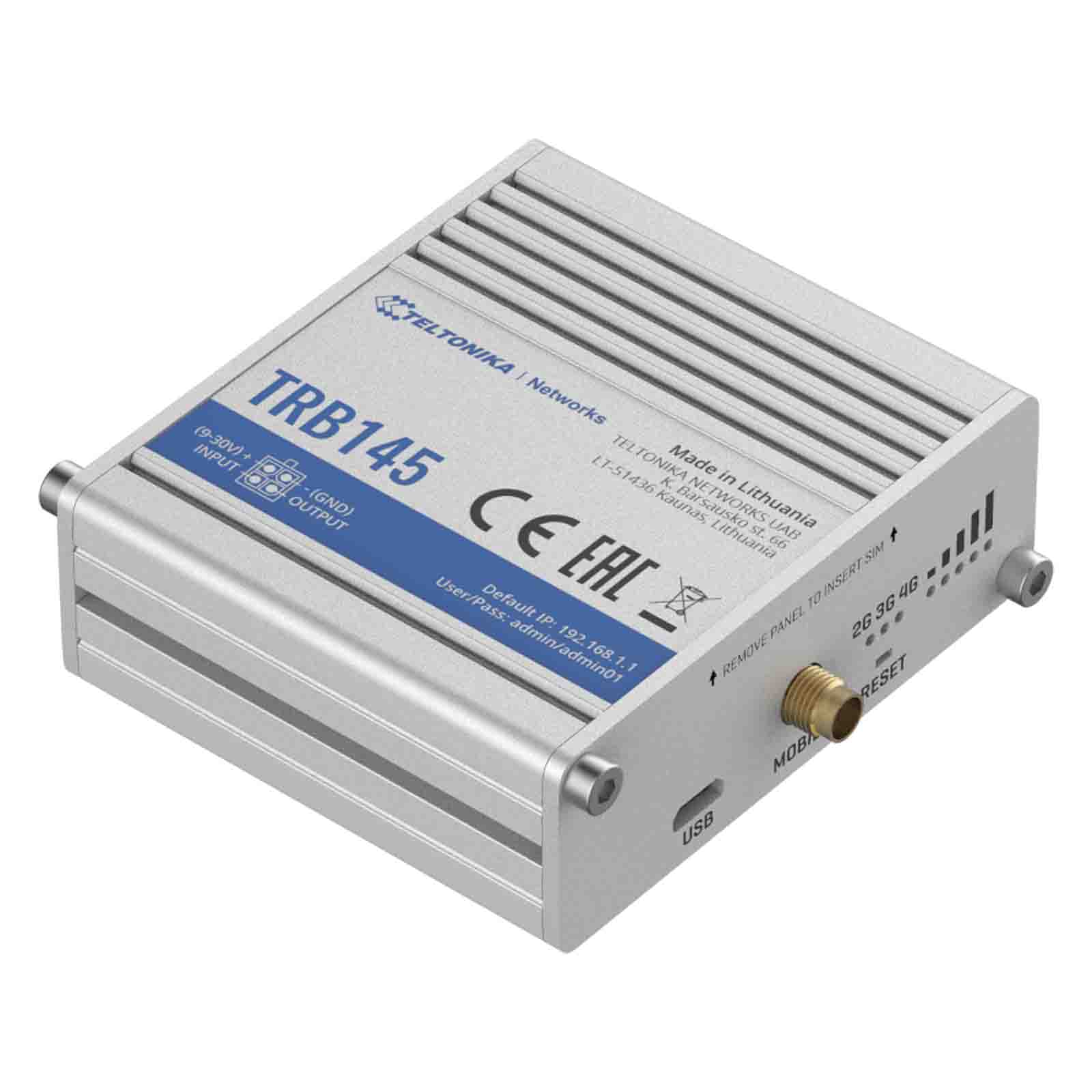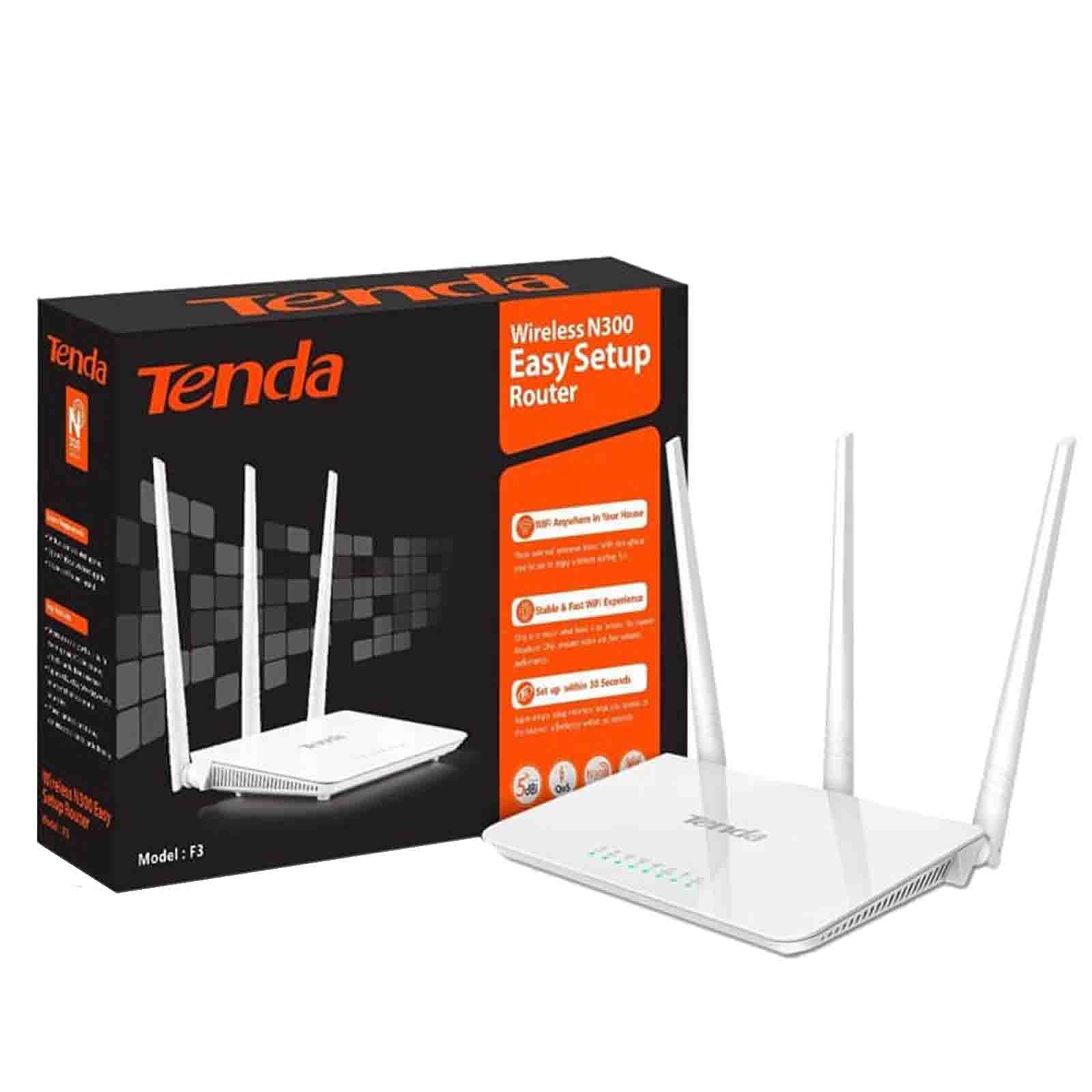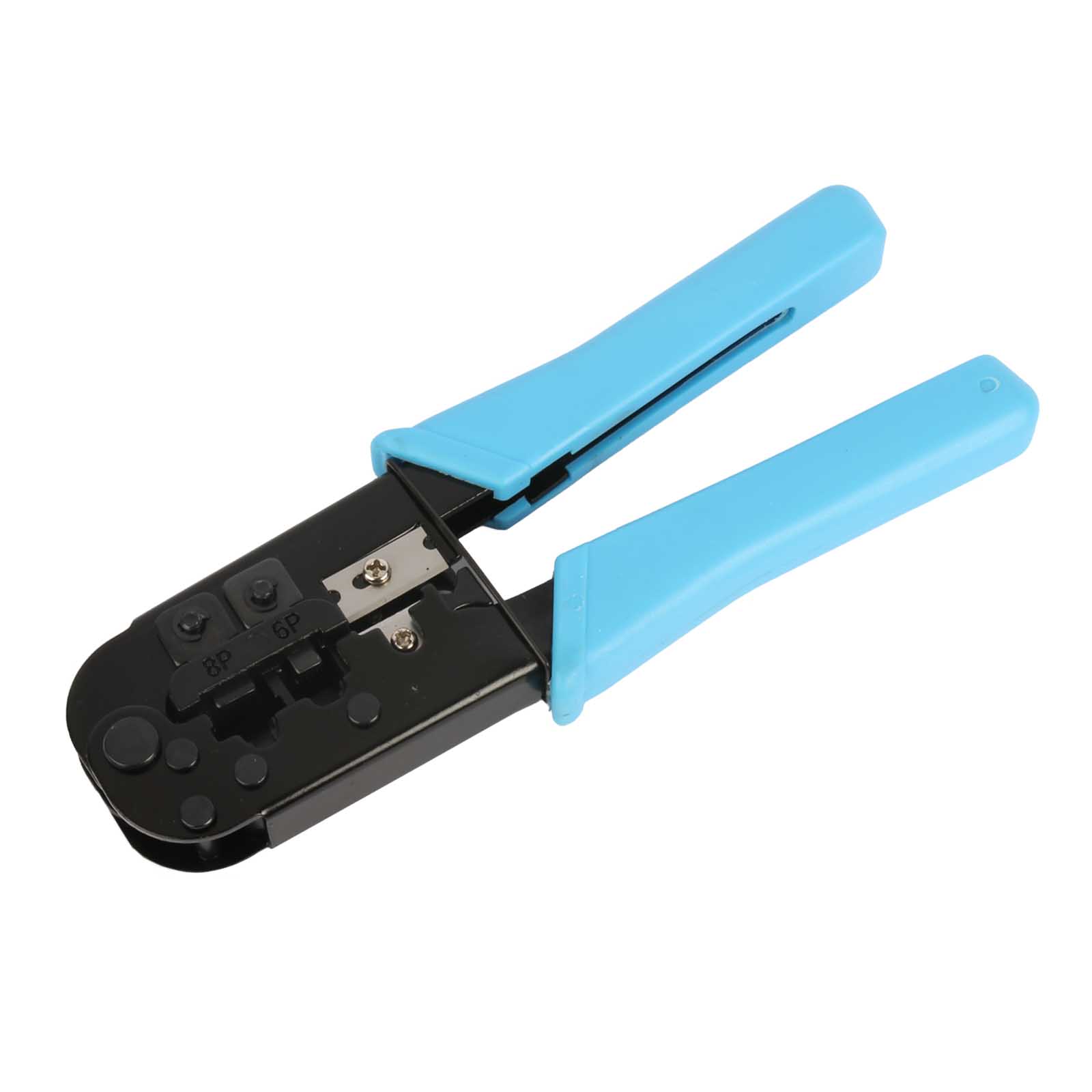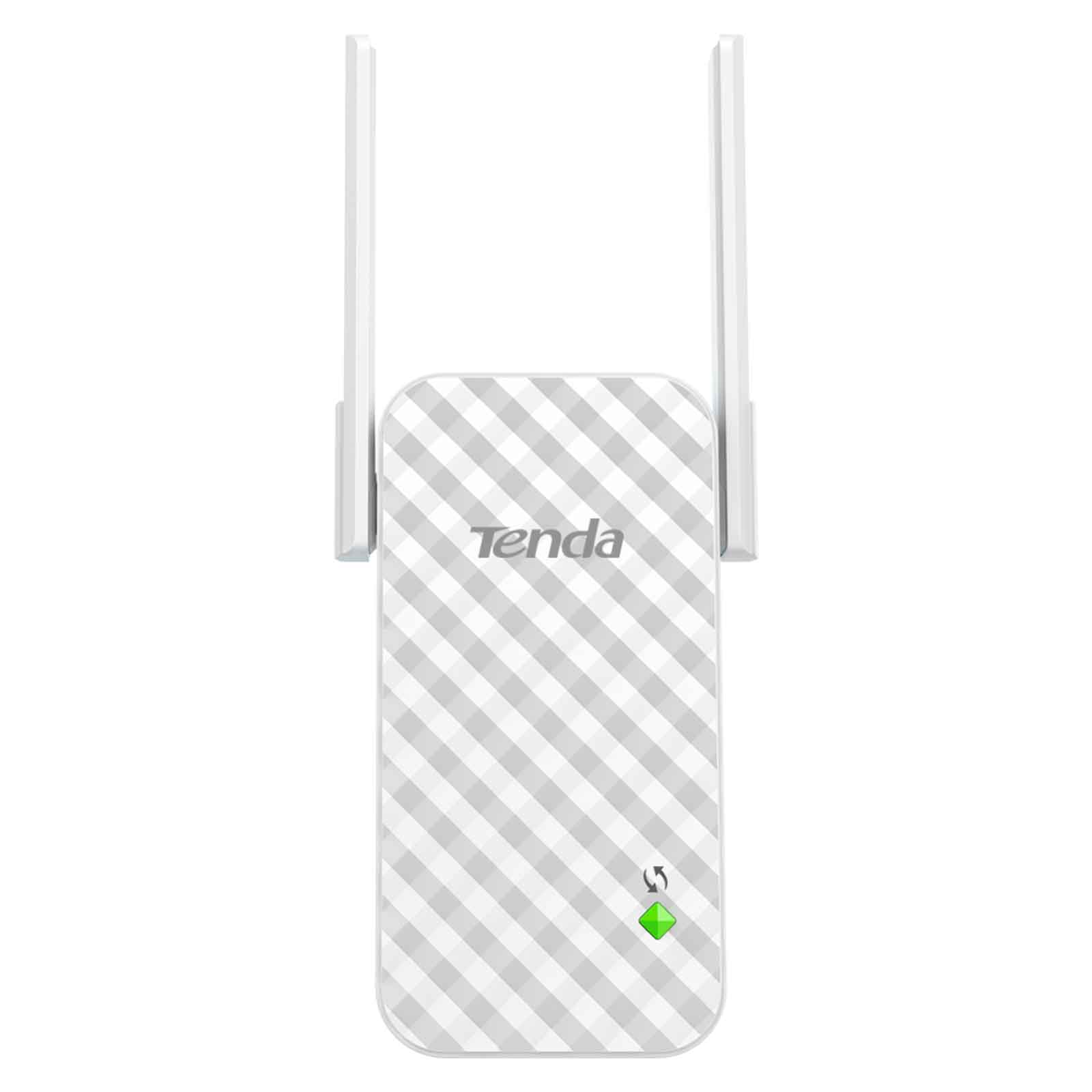Teltonika TRB145 LTE RS485 Gateway to małe, lekkie i energooszczędne urządzenie IoT wyposażone w funkcję LTE, port komunikacji szeregowej RS485, microUSB oraz procesor ARM Cortex-A7 1,2 GHz i 128Mb pamięci RAM. Podobnie jak pozostałe produkty TRB, TRB145 został zaprojektowany do użytku w zastosowaniach przemysłowych. Dlatego posiada szeroki zakres funkcji oprogramowania, takich jak sterowanie SMS-ami, zapora ogniowa, Open VPN, IPsec, Teltonika Networks Remote Management System (RMS) i obsługa FOTA. Karta siecowa oparta jest na systemie Linux. Kompaktowa konstrukcja i łatwa instalacja sprawiają, że ta bramka jest idealna do zastosowań, w których jedynym gadżetem musi być zdalnie sterowana przez interfejs szeregowy RS485.
Najważniejsze cechy:
- 1x port komunikacji szeregowej RS485, microUSB, slot na kartę Mini SIM
- LTE kat. 1 do 10 Mb/s
- 1x złącze SMA dla LTE
- procesor ARM Cortex-A7 1,2 GHz i 128MB pamięci RAM
- Kompaktowy rozmiar, łatwa integracja
- Szeroki zakres napięć zasilania 9-30V
- System zdalnego zarządzania Teltonika - RMS
- Oparty na systemie operacyjnym Linux pozwalającym na dużą personalizację oprogramowania
|
MOBILE
|
|
Mobile module
|
4G (LTE) – Cat 1 up to 10 Mbps, 3G – Up to 42 Mbps, 2G – Up to 236.8 kbps |
|
Status
|
Signal strength (RSSI), SINR, RSRP, RSRQ, EC/IO, RSCP Bytes sent/received, connected band, IMSI, ICCID. |
|
SMS/Call
|
SMS status, SMS configuration, send/read SMS via HTTP POST/GET, EMAIL to SMS, SMS to EMAIL, SMS to HTTP, SMS to SMS, scheduled SMS, SMS autoreply, Call utilities |
|
USSD
|
Supports sending and reading Unstructured Supplementary Service Data messages |
|
Black/White list
|
Operator black/white list |
|
Band management
|
Band lock, Used band status display |
|
APN
|
Auto APN |
|
Bridge
|
Direct connection (bridge) between mobile ISP and device on LAN |
|
Passthrough
|
Gateway assigns its mobile WAN IP address to another device on LAN |
|
Multiple PDN
|
Possibility to use different PDNs for multiple network access and services |
|
NETWORK
|
|
Routing
|
Static routing |
|
Network protocols
|
TCP, UDP, IPv4, IPv6, ICMP, NTP, DNS, HTTP, HTTPS, SMTP, SSL v3, TLS, PPP, SSH, DHCP, SNMP, MQTT |
|
Connection monitoring
|
Ping Reboot, Wget Reboot, Periodic Reboot, LCP and ICMP for link inspection |
|
Firewall
|
Port forwards, traffic rules, custom rules |
|
DHCP
|
Static and dynamic IP allocation |
|
QoS / Smart Queue Management (SQM) (planned)
|
Traffic priority queuing by source/destination, service, protocol or port |
|
DDNS
|
Supported >25 service providers, others can be configured manually |
|
SSHFS
|
Possibility to mount remote file system via SSH protocol |
|
SECURITY
|
|
Authentication
|
Pre-shared key, digital certificates, X.509 certificates |
|
Firewall
|
Pre-configured firewall rules can be enabled via the WebUI, unlimited firewall configuration via CLI; NAT; NAT-T |
|
Attack prevention
|
DDOS prevention (SYN flood protection, SSH attack prevention, HTTP/HTTPS attack prevention), port scan prevention ( SYN-FIN, SYN-RST, X-mas, NULL flags, FIN scan attacks) |
|
Mobile quota control
|
Set up custom data limits for SIM card |
|
WEB filter
|
Blacklist for blocking out unwanted websites, Whitelist for specifying allowed sites only |
|
Access control
|
Flexible access control of TCP, UDP, ICMP packets, MAC address filter |
|
VPN
|
|
OpenVPN
|
Multiple clients and a server can run simultaneously, 12 encryption methods |
|
OpenVPN Encryption
|
DES-CBC, RC2-CBC, DES-EDE-CBC, DES-EDE3-CBC, DESX-CBC, BF-CBC, RC2-40-CBC, CAST5-CBC, RC2-64-CBC, AES-128-CBC, AES-192-CBC, AES-256-CBC |
|
IPsec
|
IKEv1, IKEv2, supports up to 5 x VPN IPsec tunnels (instances), with 5 encryption methods (DES, 3DES, AES128, AES192, AES256) |
|
GRE
|
GRE tunnel |
|
PPTP, L2TP
|
Client/Server services can run simultaneously, L2TPv3 support |
|
ZeroTier
|
ZeroTier VPN |
|
WireGuard
|
WireGuard VPN client and server support |
|
SERIAL COMMUNICATION MODES
|
|
Modes
|
Console, OverIP, Modem (Full or Partial control), MODBUS RTU master, MODBUS gateway, NTRIP client (planned) |
|
MODBUS
|
|
MODBUS TCP SLAVE
|
|
ID filtering
|
Respond to one ID in range [1;255] or any |
|
Allow remote access
|
Allow access through WAN |
|
Custom registers
|
MODBUS TCP custom register block, which allows to read/write to a file inside the router, and can be used to extend MODBUS TCP slave functionality |
|
MODBUS TCP MASTER
|
|
Supported functions
|
01, 02, 03, 04, 05, 06, 15, 16 |
|
Supported data formats
|
8 bit: INT, UINT; 16 bit: INT, UINT (MSB or LSB first); 32 bit: float, INT, UINT (ABCD (big-endian), DCBA (little-endian), CDAB, BADC), HEX, ASCII |
|
MODBUS RTU MASTER
|
|
Supported baud rates
|
From 300 to 115200 |
|
Supported functions
|
01, 02, 03, 04, 05, 06, 15, 16 |
|
Supported data formats
|
8 bit: INT, UINT; 16 bit: INT, UINT (MSB or LSB first); 32 bit: float, INT, UINT (ABCD (big-endian), DCBA (little-endian), CDAB, BADC), HEX, ASCII |
|
Number of data bits
|
From 5 to 8 |
|
Number of stop bits
|
1 or 2 |
|
Parity
|
None, Even, Odd |
|
Flow control
|
None, Xon/Xoff |
|
MQTT GATEWAY
|
|
Gateway
|
Allows sending commands and receiving data from MODBUS Master trough MQTT broker |
|
DNP3
|
|
Supported modes
|
TCP Master, DNP3 Outstation, RTU Master |
|
DATA TO SERVER
|
|
Protocols
|
HTTP(S), MQTT, Azure MQTT, Kinesis |
|
MONITORING & MANAGEMENT
|
|
WEB UI
|
HTTP/HTTPS, status, configuration, FW update, CLI, troubleshoot, system log, kernel log |
|
FOTA
|
Firmware update from sever, automatic notification |
|
SSH
|
SSH (v1, v2) |
|
SMS
|
SMS status, SMS configuration, send/read SMS via HTTP POST/GET |
|
Call
|
Reboot, Status, Mobile data on/off, Output on/off, answer/hang-up with a timer |
|
TR-069
|
OpenACS, EasyCwmp, ACSLite, tGem, LibreACS, GenieACS, FreeACS, LibCWMP, Friendly tech, AVSystem |
|
MQTT
|
MQTT Broker, MQTT publisher |
|
JSON-RPC
|
Management API over HTTP/HTTPS |
|
MODBUS
|
MODBUS TCP status/control |
|
RMS
|
Teltonika Remote Management System (RMS) |
|
IoT PLATFORMS
|
|
Cloud of Things
|
Allows monitoring of: Device data, Mobile data, Network info, Availability |
|
ThingWorx
|
Allows monitoring of: WAN Type, WAN IP Mobile Operator Name, Mobile Signal Strength, Mobile Network Type |
|
Cumulocity
|
Allows monitoring of: Device Model, Revision and Serial Number, Mobile Cell ID, ICCID, IMEI, Connection Type, Operator, Signal Strength, WAN Type and IP |
|
Azure IoT Hub
|
Can send device IP, Number of bytes send/received/ 3G connection state, Network link state, IMEI, ICCID, Model, Manufacturer, Serial, Revision, IMSI, Sim State, PIN state, GSM signal, WCDMA RSCP WCDMA EC/IO, LTE RSRP, LTE SINR, LTE RSRQ, CELL ID, Operator, Operator number, Connection type, Temperature, PIN count to Azure IoT Hub server |
|
SYSTEM CHARACTERISTICS
|
|
CPU
|
ARM Cortex-A7 1.2 GHz CPU |
|
RAM
|
128 MB (50 MB available for userspace) |
|
FLASH storage
|
512 MB (200 MB available for userspace) |
|
FIRMWARE / CONFIGURATION
|
|
WEB UI
|
Update FW from file, check FW on server, configuration profiles, configuration backup |
|
FOTA
|
Update FW/configuration from server |
|
RMS
|
Update FW/configuration for multiple devices |
|
Keep settings
|
Update FW without losing current configuration |
|
FIRMWARE CUSTOMIZATION
|
|
Operating system
|
RutOS (OpenWrt based Linux OS) |
|
Supported languages
|
Busybox shell, Lua, C, C++ |
|
Development tools
|
SDK package with build environment provided |
|
INPUT/OUTPUT
|
|
Configurable I/O
|
2 x Configurable Inputs/Outputs. Digital input 0 - 6 V detected as logic low, 8 - 30 V detected as logic high. Open collector output, max output 30 V, 300 mA (not available in TRB145*2****) |
|
Output control
|
HTTP POST/GET, Schedule |
|
Events
|
SMS, EMAIL |
|
I/O juggler
|
Allows to set certain I/O conditions to initiate event |
|
POWER
|
|
Connector
|
4 pin industrial DC power socket |
|
Input voltage range
|
9 – 30 VDC (4 pin industrial socket), reverse polarity protection, surge protection >33 VDC 10us max |
|
Power consumption
|
< 5 W |
|
PHYSICAL INTERFACES (PORTS, LEDS, ANNTENAS, BUTTONS, SIM)
|
|
RS485
|
1 x 6 pin terminal block for 2-wire or 4 wire interface |
|
I/Os
|
2 x Configurable I/O pins on 4 pin power connector (I/O not available in TRB145*2****) |
|
USB
|
1 x Virtual network interface via micro USB |
|
Status LEDs
|
3 x connection type status LEDs, 5 x connection strength LEDs, 1x Power LED |
|
SIM
|
1 x SIM slot (Mini SIM – 2FF), 1.8 V/3 V |
|
Power
|
4 pin power connector with 2 x configurable Digital Inputs/Outputs (I/O not available in TRB145*2****) |
|
Anntena
|
1 x SMA for LTE |
|
Reset
|
Reboot/User default reset/Factory reset button |
|
PHYSICAL SPECIFICATIONS
|
|
Casing material
|
Aluminum housing |
|
Dimensions (W x H x D)
|
74.5 x 25 x 64.4 mm |
|
Weight
|
130 g |
|
Mounting options
|
Bottom and sideways DIN rail, Flat surface |
|
OPERATING ENVIRONMENT
|
|
Operating temperature
|
-40 °C to 75 °C |
|
Operating humidity
|
10 % to 90 % non-condensing |
|
Ingress Protection Rating
|
IP30 |
|
REGULATORY & TYPE APPROVALS
|
|
Regulatory
|
CE/RED, EAC, RoHS, WEEE |
|
EMI
|
|
Standards
|
Draft ETSI EN 301 489-1 V2.2.0, Draft EN 301 489-19 V2.1.0, Draft ETSI EN 301 489-52 V1.1.0 |
|
ESD
|
EN 61000-4-2:2009 |
|
RS
|
EN 61000-4-3:2006 + A1:2008 + A2:2010 |
|
EFT
|
EN 61000-4-4:2012 |
|
Surge protection
|
EN 61000-4-5:2014 |
|
CS
|
EN 61000-4-6:2014 |
|
DIP
|
EN 61000-4-11:2004 |
|
RF
|
|
Standards
|
EN 300 511 V12.5.1, ETSI EN 301 908-1 V11.1.1, ETSI EN 301 908-2 V11.1.2, ETSI EN 301 908-13 V11.1.2 |
|
SAFETY
|
|
Standards
|
IEC 62368-1:2014(Second Edition), EN 62368-1:2014+A11:2017
EN 50385:2017
EN 62232:2017 |
|











 Najtańsza dostawa: (pokaż wszystkie)
Najtańsza dostawa: (pokaż wszystkie)















